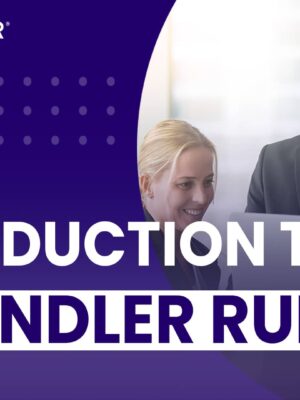Value Is in the Eyes of the Client

In selling to and serving major accounts, we hear a lot about value. Certain buzzwords have emerged around this topic, terms that, more often than not, simply add confusion. There’s “adding value” and “delivering value,” both of which we generally assume we are doing simply by existing in the same universe as the client. Then there’s what may well be the granddaddy of all overused business terms, the “value-add.” This seems to mean the actual benefit that we predict the client will experience as a result of all of our efforts. The problem is that none of these concepts originate in the client experience. All of them are fatally flawed, because they’re all defined by us, the seller.
In the Sandler Research Center’s second survey, “The Client Experience,” value was a key focus area for analysis. The prominence we gave this subject in our survey arose from the premise that meaningful, long-term relationships between firms must be based on sustainable value. Our research on this score produced some surprising results.
For instance, only 53% of the respondents indicated that their organizations were fully aware of their most important client’s customized view of the value they deliver. Think about that. Almost half of the people taking the survey admitted that they didn’t understand how their most important client defines the value they bring to the table.
The response to another survey question hinted at one possible explanation for that rather shocking admission. Only 52% of respondents said they effectively monitored their value delivered against their most important client’s needs. This suggests that half of all selling team not only don’t understand how their clients’ needs match up with what is actually experienced, but also aren’t making any meaningful effort to do so!
In such circumstances, the unique value proposition justifying our relationship with any given client is likely to be a casualty. And when that happens, the client relationship itself is in jeopardy.
I’ve used the phrase “value proposition” in a very narrow sense here: that which a specific client regards as valuable. One popular, but misguided, definition of the phrase “value proposition” reads very differently: “a statement about the combination of goods and services offered by a company in exchange for payment.” Notice that in this antiseptic definition there is not one word about whether the recipient of the goods and services feels value has been delivered! In this definition, the account is cast as the target of the proposition. Ready, aim, fire! The reality is that the account shouldn’t be the target of the value proposition at all. Far from it. The account should be the value proposition’s unique source.
Think about the typical, uncustomized organizational messaging that goes out about the benefits that your products or services deliver. This material is often heavily influenced – or perhaps drafted entirely – by the good people in marketing or product development. We love them. We appreciate all they do. But to be meaningful for real accounts, this messaging simply must be customized, and the customization must arise from interactions with a real, live client. Using boilerplate messaging from marketing or product development with major account opportunities is a recipe for failure. The stakes are simply too high, and the chance of a disconnect too great.
The question is, how can we customize value messaging quickly and economically, while staying agile enough to manage the complicated nature of these initiatives? We must start with a logical, structured pursuit framework, one that aligns your organization’s strengths with the best profile opportunities, providing the roadmap to pursue the highest probability deals. These aligned opportunities, once they are vetted by a sound Go/No-Go analysis, must drive the development of a truly customized value proposition that is unique to the particular client.
In Sandler Enterprise Selling, such a customized value proposition has four parts:
What the product or service is that you propose. The specific solution addressing the account’s needs and pains. It could be a standard product or service from your offerings portfolio, or it might bundle multiple products and services including offerings from business partners, subcontractors, or other third parties.
What the product or service actually does for the account. Your solution does different things and is used differently by different accounts. How it will be ultimately be implemented by each specific account must be clearly understood and expressed.
How your solution will benefit the account. This must be identified in specific terms that make a discernible difference to the account. The concrete results that the account will experience, the advantage that will favorably result from your solution, must be laid out comprehensively.
How the account will measure the benefit. This part outlines the account’s quantifiable definition of success in the implementation of your solution. After the business is won, how will that success will be determined, measured, and verified by the client?
These four clear elements – what it is, what it does, how it benefits, and how it’s measured – taken together constitute a mantra that must guide your team throughout the pursuit, helping you to keep a laser focus on the account. The work done previously by your marketing or product development teams lies in the past. At this point, your work is all about the account and the alignment of your solution to directly address clearly identified client needs.
Of course, the effectiveness of this value proposition framework is dependent on the quality of the work your team has done in uncovering the account’s specific needs and pains, and on your ability to address them. You must know this unique account in order to create this customized value proposition. Once you know the requirements and the priorities, and you accept that value is always defined by the client, you will be able to follow the customized value proposition.
Given the daunting complexities of enterprise pursuits, it’s fascinating that the simplest things are often what determine winners and losers. Follow the simple clarity of this four-step framework. And remember: when it comes to value propositions, it’s not about you. It’s about the account.
Learn more about what the Sandler Research Center has to offer.







